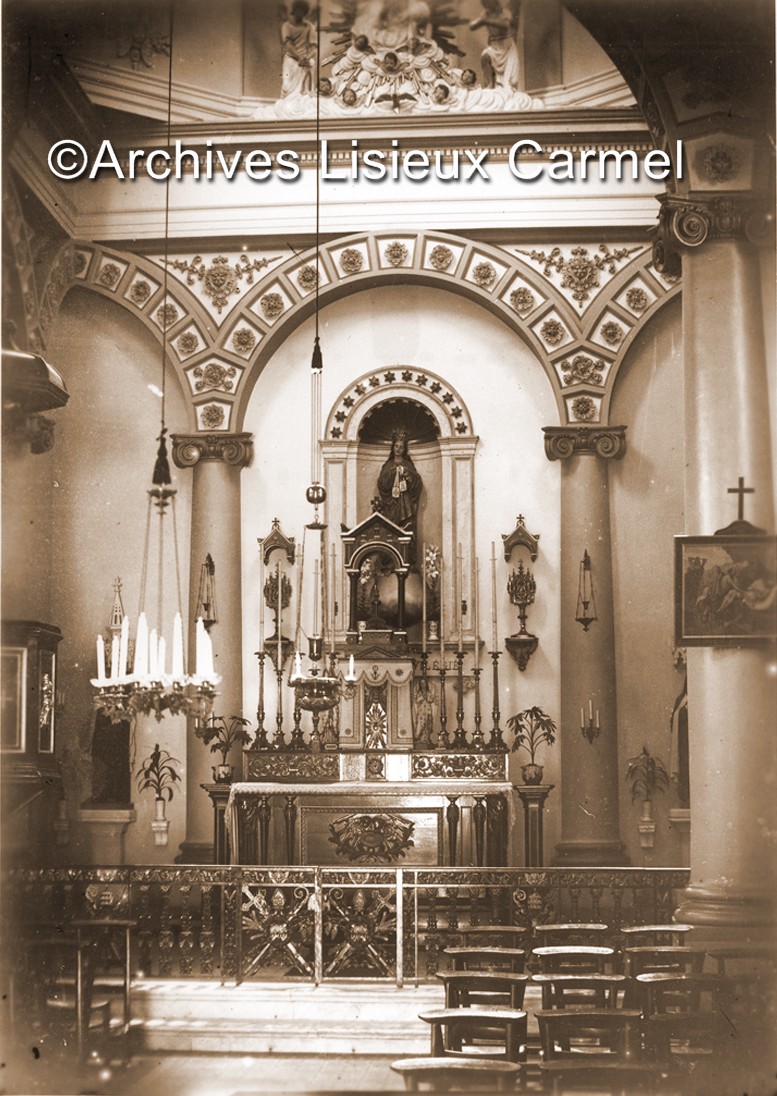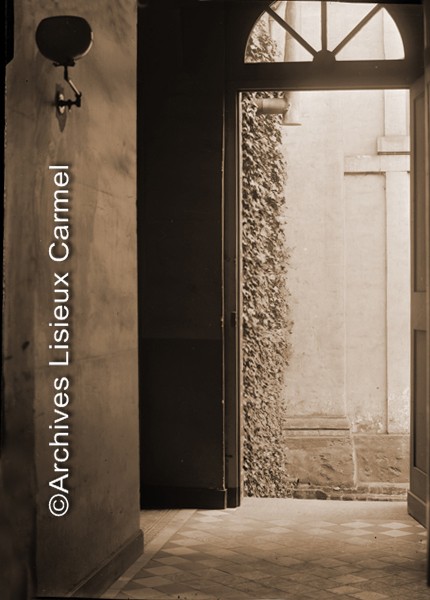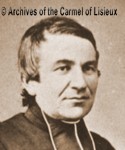An essay illustrated with 19th century photos to celebrate the 125th annniversary of the day St. Therese of Lisieux entered Carmel, April 9, 1888
/Therese Martin entered Carmel on Monday, April 9, 1888. That year April 9 was the feast of the Annunciation, which had been transferred from March 25 because of Lent. This photo essay is to celebrate the 125th anniversary of her entrance.
Therese a few days before she entered on April 9, 1888
Let's listen to some accounts of her entrance. First, Saint Therese's own:
"On the morning of the great day, casting a last look upon Les Buissonnets, that beautiful cradle of my childhood which I was never to see again, I left on my dear King's arm to climb Mount Carmel. Chapel entrance of Lisieux Carmel photographed shortly after Therese's death
As on the evening before, the whole family was reunited to hear Holy Mass and receive Communion. As soon as Jesus descended into the hearts of my relatives, I heard nothing but sobs around me.
I was the only one who didn't shed any tears, but my heart was beating so violently it seemed impossible to walk when they signaled for me to come to the enclosure door. I advanced, however, asking myself whether I was going to die because of the beating of my heart! Ah! what a moment that was. One would have to experience it to know what it is.
Louis Martin, probably at age 58, about 1881
My emotion was not noticed exteriorly. After embracing all the members of the family, I knelt down before my matchless Father for his blessing, and to give it to me he placed himself upon his knees and blessed me, tears flowing down his cheeks. It was a spectacle to make the angels smile, this spectacle of an old man presenting his child, still in the springtime of life, to the Lord!
Space where Louis knelt to bless Therese when she entered, April 9, 1888A few moments later, the doors of the holy ark closed upon me, and there I was received by the dear Sisters who embraced me. Ah! they had acted as mothers to me in my childhood, and I was going to take them as models for my actions from now on. My desires were at last accomplished, and my soul experienced a peace so sweet, so deep, it would be impossible to express it."
(Story of a Soul: The Autobiography of St. Therese of LIsieux, tr. John Clarke, O.C.D. Washington, D.C.: ICS Publications, 3rd ed., 1996. Used with permission).
Canon Delatroette
St. Therese writes "A few moments later." She tactfully omits what other witnesses report happened in those few moments. Canon Jean-Baptiste Delatroette, the parish priest of St. Jacques, was the ecclesiastical superior of the Lisieux Carmel (the priest charged with supervising, from the outside, this community of women religious). He had bitterly opposed Therese's entrance, believing her too young, but was overruled by his bishop, who left the decision up to the prioress. Before Therese crossed the threshold, and in the presence of her father and her sisters, Canon Delatroette announced "Well, my Revend Mothers, you can sing a Te Deum. As the delegate of Monseigneur the bishop, I present to you this child of fifteen whose entrance you so much desired. I trust that she will not disappoint your hopes, but I remind you that, if she does, the responsibility is yours, and yours alone." He could not have foreseen that twenty-two years later Pope St. Pius X would call this girl "the greatest saint of modern times."
Much less well known than Saint Therese's account of her entrance is Celine's description of her experience of the same moment. Celine and Leonie were present with their father at the short ceremony.
Celine and Leonie the year after Therese enteredAfter writing of how inseparable she and Therese were, Celine continued:
It tookmuchyettoget toMonday, April 9, 1888, where the little Queen left her own, after we heard Mass together in the Carmel, to join her two older sisters in the cloister. When I gave her a farewell kiss at the door of the monastery, I was faltering and had to support myself against the wall, and yet I did not cry, I wanted to give her to Jesus with all my heart, and He in turn clothed me in his strength. Ah! how much I needed this divine strength! At the moment when Thérèseentered theholy ark, the cloister door which shut between us was the faithful picture of what really happened, as a wall had arisen between our two lives." (from the obituary circular of Celine Martin, Sister Genevieve of the Holy Face, copyright Lisieux Carmel; translation copyright Maureen O'Riordan 2013).
The enclosure door which shut between Celine and Therese on April 9, 1888Saint Therese continues, writing of her impressions that first day: "Everything thrilled me; I felt as though I was transported into a desert; our little cell, above all, filled me with joy." St. Therese occupied three cells in Carmel, and until now few people have seen even a photograph of that first cell, for the photo commonly published was of Therese's last cell. Thanks to the generosity of the Archives of the Lisieux Carmel, we can at last see early photos of the room Therese saw that day. It was on the corridor near the garden:
The corridor with the door to Therese's first cell standing openThis cell looked out on the roof of the "dressmaking building" where habits were made:
Carmelite postulants wore a secular dress with a little capelet, and a small net bonnet on the head. The photograph below of Marie Guerin as a postulant (she entered August 15, 1895) shows how St. Therese and all postulants dressed until they received the habit.
Learn more about the Carmelite life Therese began to live on April 9, 1888.
The feast of the Annunciation is usually celebrated on March 25, just nine months before the feast of Christmas. One of the other nuns testified that Therese loved the feast on March 25 "because that's when Jesus was smallest." Therese began her Carmelite life on the feast of Mary's "Yes" to her Lord. May each of us enter every day of our own lives with Therese's fervor and joy, for every day is a doorway for each of us to intimacy with God, to wholeness, and to sainthood.
Note: the Archives of the Carmel of Lisieux are being digitized and posted online in English at the Web site of the Archives of Carmel of Lisieux. All the above photos are displayed courtesy of that site. Please visit it here to see thousands of pages of photographs, documents, and information about St. Therese, her writings, her family, her environment, the nuns with whom she lived, and her influence in the world. It is a true doorway to Saint Therese!










